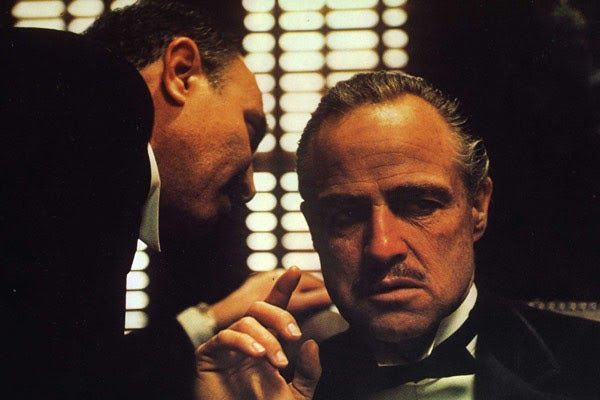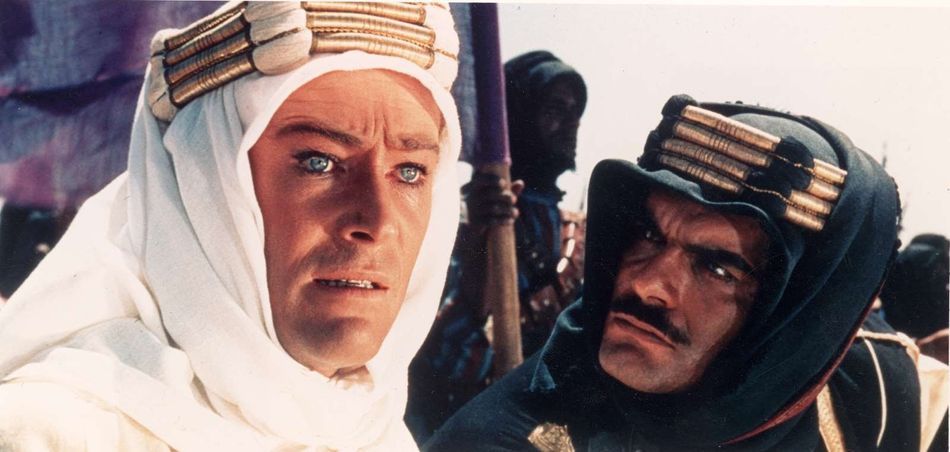Cinematic shots can be "cool," but the principles of cinematography shown in Hollywood can also be applied for character animation in Motion Design
MoGraph artists succeed when they employ the rules and techniques of classic character animation. Why don’t we do this with the camera and lighting? The rules and techniques of Hollywood cinematography can be as effective as character animation principles when applied to motion graphics.

The whole history of motion design is rooted in breaking the rules of so-called "realism" to show us the world in a way we’ve never seen it before. Yet using tried and true camera techniques—from depth of field, to camera movement, heck, even lens flares—as mere tricks can be a huge missed opportunity.
We motion designers have learned that flouting the laws of physics, even a little bit, can sink an entire animation. So what would happen if we paid more attention to how cinematographers use the constraints of the camera to make magic?

In this article we’ll explore five principles of what makes a shot "cinematic" that have direct analogues in animation in terms of how they are used. Together these constitute something like a secret weapon for mograph:
- Less is more. Cinematographers show as little as possible, but no less
- Cinematic images—right down to the still frame—show us where to look
- The true purpose of movie lighting is to create emotional impact
- The camera is a character in the film
- Camera shot designs convey a point of view
By looking at reference—like we do with animation—we find that the so-called "real" world of lenses, lighting, and optics is full of more surprises than our creative minds can easily comprehend.
Less is more in cinematic shots
Cinematographers show as little as possible, but no less. Just as keyframe animations contain far less motion information than raw motion capture data, cinematic images remove detail and color from the natural world—like, seriously, most of it.

Examine the “singular” quality of a classic movie still, such as the ones below, and you’ll see their iconic status is no accident. To understand how "less can be more," pay particular attention to what we don’t see.
One common missing detail is...most of the color spectrum. These images are taken from the full-color real world, yet they all are dominated by three colors or fewer—right down to zero in the case of a black and white movie.
More than that, much of the image detail that does appear in the image is obscured by soft focus, what we call “depth of field effects.”
We don’t even see all of the motion. In an era where computer games can exceed 120fps, film still uses the 24fps standard established a century ago.
What’s left after throwing away so much image data? Only the magic...which is to say, only what matters to the shot. That might be a human face or figure—as with these examples—in such strong relief that they appear almost as in a dream.



Iconic cinematic images show us where to look
Cinematic images also seem to make what’s left seem to jump off the screen. More than simply aiming and focusing the camera propery and following the action, these sequences carefully direct your attention within the shot itself.



Actors deserve much credit for what they bring to the scenes that make them stars, but the best among them understand that they are at the mercy of the skills behind the camera to lend them superpowers.
At the same time, compelling animation can work despite zero use of lighting, color, composition, or optical effects to highlight it. But by making use of these extras, we can lift these designs to another level.
Cinematographers aim for the strongest appropriate lighting choices (and this is an understatement)
Great movies need great lighting. To anyone who knows film productions, this might be a little like saying “actors make strong emotional choices.” Cinematography is about knowing camera technology, sure, but just think for a moment about the title of one of the classic books on this craft: “Painting with Light” by John Alton.


Graphic designers love their work as-created. But to simply show us the artwork that way is a little like leaving a film set fully, evenly lit. And particularly as mograph artists move to renderers that provide fully naturalistic lighting and detail, it’s crucial that they learn to dynamically reveal (and conceal!) the action.
The camera is itself a character in the story
A film might open with a static establishing shot, then cut to a handheld camera view. What do we, as viewers, perceive just happened? We moved inside someone’s head, dared to see and feel what they did.
On the other hand, a motion graphics animation might start out by showing off the design in the flashiest possible way. Does it tell you anything about the dramatic point of view, or just follow the action?
When the camera becomes itself a character, it draws in the audience by leading them in the dance of the shot.


The job of lighting and camera is not to simply to reveal everything, but to convey emotional truth
Just as the neutral walk cycle has a place in animation, the camera can likewise play a neutral part in a scene. In such cases, the composition and lighting of the shot convey emotion.
Here are a couple of shots that use symmetry, dimension, and a locked-off camera to create an effect that is anything but neutral. How do they do it?


Here is an awesomely comprehensive overview from the cinematographer of Bohemian Rhapsody, Drive, and We Three Kings, chock full of great ideas for creators who work with cameras.
Conclusion
Filmmaking is by necessity a collaborative art form, while motion graphics is—at its core—most often executed by an individual.
With great power comes great responsibility. Creativity has a funny way of thriving amongst constraints and being thwarted by endless possibilities. Introducing the natural laws of optics and physics to digital cameras and lighting can lead to delightful surprises similar to those we discover in the best animations.
Learning these laws doesn’t mean being chained to them in all cases. But it can save you from that supreme insult aimed at visual effects and motion graphics animation alike: “IT LOOKS FAKE!” We use artifice and technique learned from the natural world to prevent this happening. And in the best cases we can learn to create movie magic.
Want to Make Some Magic of Your Own?
Now that you've been inspired to watch more movies, why not make a little movie magic? Mark isn't just great at dissecting cinematic shots, he also teaches one of our newest courses: VFX for Motion!
VFX for Motion will teach you the art and science of compositing as it applies to Motion Design. Prepare to add keying, roto, tracking, matchmoving and more to your creative toolkit.

Dive into real-time 3D with our Unreal Engine beginner's course by Jonathan Winbush. Master importing assets, world-building, animation, and cinematic sequences to create stunning 3D renders in no time! Perfect for motion designers ready to level up.
Explore this Course ➔
Unlock the secrets of character design in this dynamic course! Explore shape language, anatomy rules, and motifs to craft animation-ready characters. Gain drawing tips, hacks, and Procreate mastery (or any drawing app). Ideal for artists seeking to elevate their craft.
Explore this Course ➔
Elevate your freelance motion design career with our guide to client success. Master a repeatable method for finding, contacting, and landing clients. Learn to identify prospects, nurture leads, and develop a thriving freelance philosophy amidst chaos.
Explore this Course ➔
Rev up your editing skills with After Effects! Learn to use it for everyday needs and craft dynamic templates (Mogrts) for smarter teamwork. You'll master creating animated graphics, removing unwanted elements, tracking graphics, and making customizable templates.
Explore this Course ➔
Stand out with Demo Reel Dash! Learn to spotlight your best work and market your unique brand of magic. By the end, you'll have a brand new demo reel and a custom campaign to showcase yourself to an audience aligned with your career goals.
Explore this Course ➔
Illuminate your 3D skills with Lights, Camera, Render! Dive deep into advanced Cinema 4D techniques with David Ariew. Master core cinematography skills, gain valuable assets, and learn tools and best practices to create stunning work that wows clients.
Explore this Course ➔
Master After Effects at your own pace with Jake Bartlett's beginner course. Perfect for video editors, you'll learn to create stylish animated graphics, remove unwanted elements, and track graphics into shots. By the end, you'll be equipped for everyday AE needs and more.
Explore this Course ➔
Revolutionize your Premiere workflow with customizable AE templates! Master creating dynamic Motion Graphics Templates (Mogrts) in After Effects to speed up your team's work. By the end, you'll craft easily-customizable templates for seamless use in Premiere Pro.
Explore this Course ➔
Not sure where to start?
If you’re a beginner, here are some great courses to help you get started:

After Effects Kickstart
Dive into the fundamentals of motion design with our most popular (and recently updated) After Effects course.

Photoshop + Illustrator Unleashed
Master the basics of Photoshop and Illustrator and gain invaluable insights in this introductory level course.

Design Kickstart
An introduction to the design principles behind all great work.
More Advanced?
If you’re a more advanced student looking to up your game, here are some great options:

Animation Bootcamp
Learn the art and principles of creating beautiful movements in Adobe After Effects.

Design Bootcamp
Learn to design for motion in this intermediate-level, project-based course.

Cinema 4D Basecamp
Learn Cinema 4D from the ground up in this exciting introductory C4D course.
Now is the time to learn the skills you need to advance in your motion design career:











